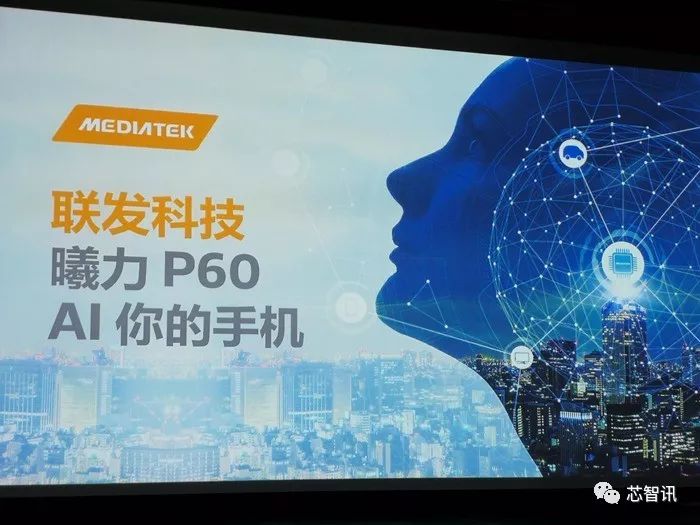
With the development of artificial intelligence (AI) technology, as the largest and most popular personal mobile intelligent terminal, many AI applications have already entered the smart phone. At present, most AI applications on smartphones are still implemented based on the cloud. Compared with cloud AI, AI computing directly on the smartphone side has low latency, low power consumption, low bandwidth requirements, and is beneficial to user privacy. Protection and many other advantages. This has also led to the launch of mobile phone chips with integrated AI cores. For example, Huawei’s Kirin 970 and Apple’s A11 Bionic were released last year.
The Qualcomm Snapdragon 845, which was subsequently released, does not have a separate AI core, but continues to enhance support for artificial intelligence through existing CPU/GPU/DSP, but Qualcomm still emphasizes that Snapdragon 845 is already its third-generation AI processing. The device is gone. In February of this year, Arm also released the Arm IP kit for artificial intelligence for the first time, including two AI processor IPs. Obviously, supporting AI has become a major trend in smartphone chips.
Following the launch of the NeuroPilot artificial intelligence platform at this year's CES, on the afternoon of March 14, MediaTek held a new product launch conference in Beijing with the theme "Yi Li P60 AI Your Mobile Phone", officially released its first 12nm process, based on NeuroPilot. Platform, SoC integrated with multi-core AI processor - 曦力P60. The following core intelligence will come to you to introduce this chip in detail.
Adding four high-performance big cores for the first time: CPU performance is greatly enhanced
Previously, MediaTek's P-series CPUs have always used ARM's small core. For example, P20, P23, and P30 CPUs are based on Arm's A53 eight-core architecture, so the P series and the previous X series have always existed in CPU performance. A certain gap.
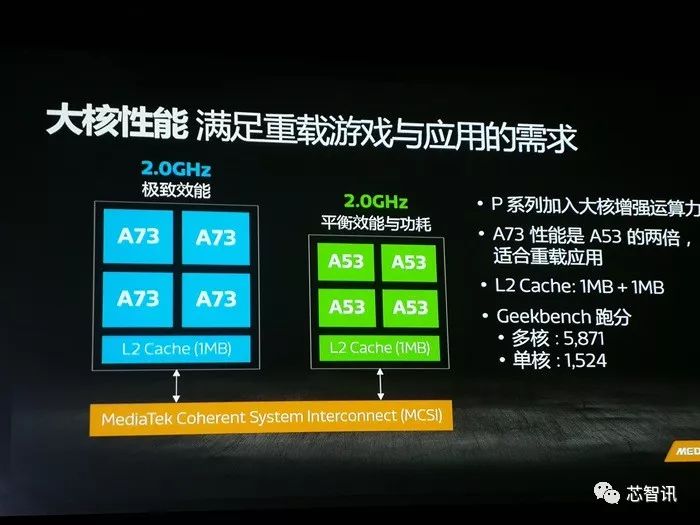
The Helio P60 is the first to use the A73 quad-core + A53 quad-core big-LITTLE eight-core architecture, although the size of the core is 2GHz, but thanks to the addition of four A73 big core, making Helio P60 The CPU performance has been greatly improved. The reason why MediaTek added four A73 big cores for the Helio P60 is mainly to cope with the performance requirements of large games. Who is called "Glory of the King" and all kinds of "eat chicken" mobile games so hot!
According to data from MediaTek, in the Geekbench run, the Helio P60 scored 1524 on a single core and 5871 on a multicore score.
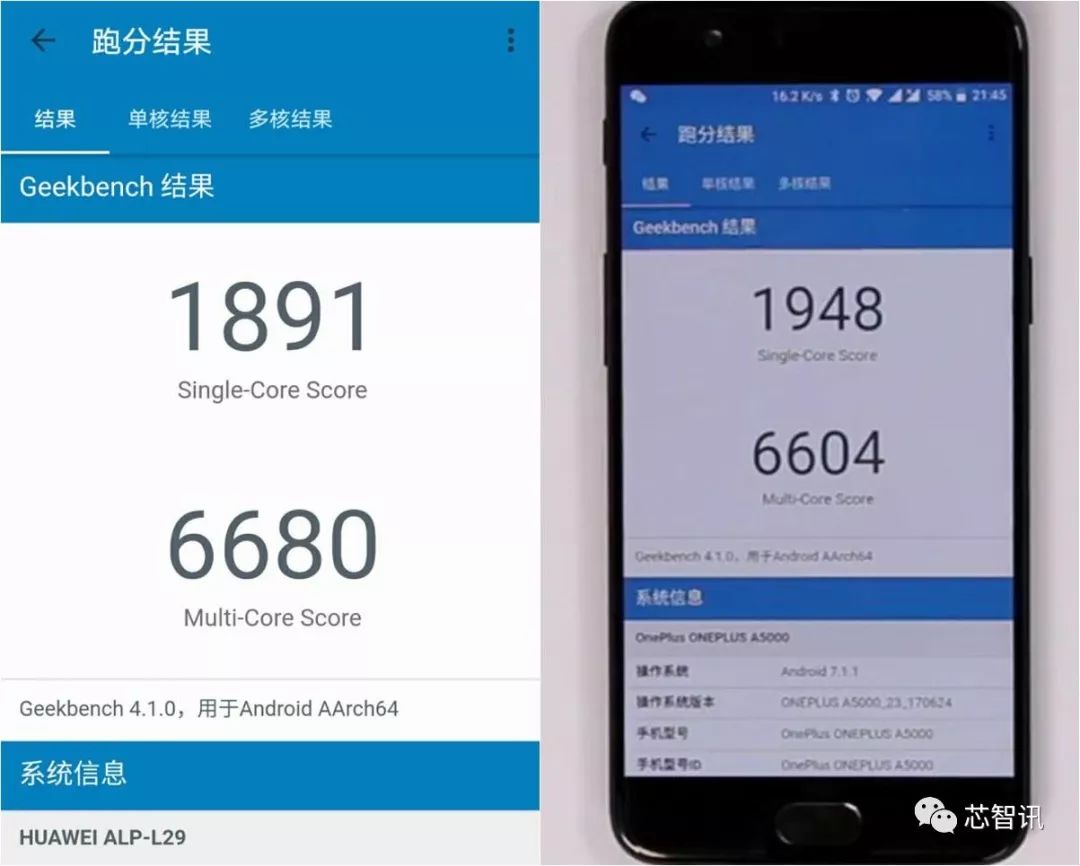
â–²The left side is the Huawei Kirin 970 running point, and the right side is the running point of Xiaolong 835.
From the above data, it is not difficult to see that the Helio P60's CPU score is lower than the Kirin 970 and the Snapdragon 835. The single-core performance is 20% lower, and the multi-core performance is only slightly lower by 13%. about. It should be noted that for the overall performance of the Helio P60, the A93 big core's main frequency is controlled at 2GHz, while the Kirin 970's A73 big core frequency is pulled to 2.4GHz, and the Snapdragon 835's large core frequency also reaches 2.45. GHz. So, overall, the Helio P60's performance is good.
Mali G72 triple core + Tencent optimization, game performance is worth looking forward to
On the GPU side, the Helio P60 also has a lot of improvement. Before the Helio P30 was the Mali-G71 MP2, clocked at 900MHz, and the Helio P60 used the Mali-G72 MP3, clocked at 800MHz. Although the clock speed has been reduced, a new generation of GPUs has been adopted, and the number of cores has been increased from the original dual core to the triple core. Unfortunately, MediaTek did not give a specific improvement in the GPU performance of the Helio P60 compared to the Helio P30 at the press conference.
However, according to previous Arm data, the Mali-G72 has improved performance by 40%, energy efficiency by 25%, and more importantly, machine learning efficiency by 17% compared to the Mali-G71. In other words, the Helio P60 should have at least a 40% improvement in GPU performance compared to the Helio P30.
Of course, compared with the flagship chips such as Snapdragon 835 and Kirin 970, the Helio P60 is still weak in GPU parameters. For example, the GPU of Kirin 970 is also Mali-G72, but its core number reaches four of Helio P60. Times.
We all know that the performance of the GPU is very important for the game. In the current popularity of Tencent's "Glory of the King", "Stimulus Battlefield", Netease's "Wild Action" and many other mobile games, the game performance of mobile phones has become the focus of many users. So why is the GPU parameters of the Helio P60 not greatly improved?
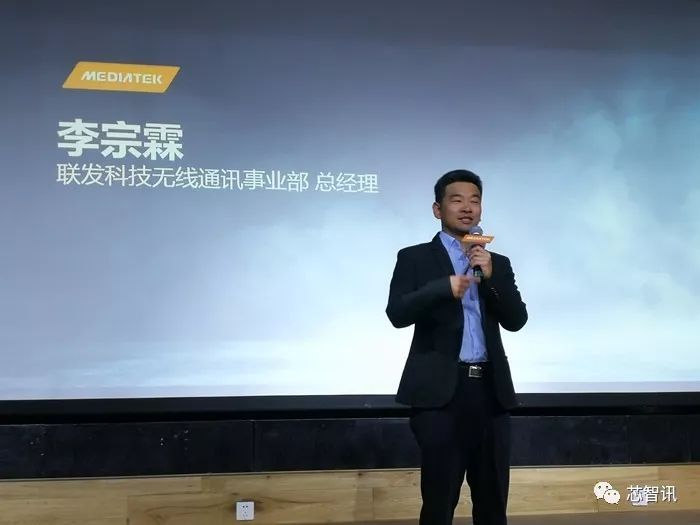
Li Zonglin, general manager of MediaTek Wireless Communications Division, said: "MediaTek has been pursuing a balance between performance and power consumption. In our opinion, the GPU's nature can be used to meet the needs of most users. It does not have to be The key to pulling the GPU is so high is the user experience. So we also set up an innovation lab in conjunction with Tencent to make the next series of optimizations. We are confident to make the game experience a good one."
At the beginning of March this year, MediaTek and Tencent Games jointly announced that the two sides will set up a joint innovation laboratory, "to achieve strategic cooperation around the development and optimization of mobile games and other entertainment products, and jointly explore the application of AI on the terminal side." We all know that Tencent does occupy a large market share in the mobile game market. The current "Glory of the King" and "Stimulus Battlefield" are all from Tencent. I believe that under the joint optimization of MediaTek and Tencent, the performance of the Helio P60 should be worth looking forward to.
TSMC 12nm process, power consumption is greatly reduced
After talking about CPU/GPU performance, let's take a look at the power performance of the Helio P60.
As the world's first chip using TSMC's 12nm process, the P60 is also attracting the attention of many insiders. In fact, TSMC's 12nm is not a true 12nm process, but a fourth-generation micro-modified version of its original 16nm process. Of course, some indicators should be close to 12nm.
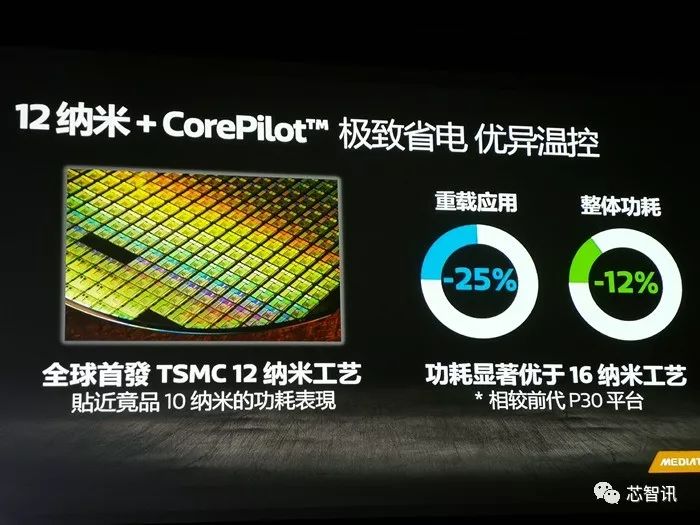
According to data released by MediaTek, the 12nm Helio P60 consumes 25% less power in high-load applications compared to the 16nm Helio P30, and overall power consumption drops by 12%. It should be noted that the Helio P60 also added four performance cores, the A73, for the first time, so if it is in the same process, the Helio P60 should consume more power than the Helio P30. Obviously, the power consumption of TSMC's 12nm process is indeed significantly better than the previous 16nm process.
The temperature control comparison data from MediaTek shows that after 15 minutes of playing the same large game, the surface temperature of the mobile phone equipped with the 12nm Helio P60 chip is the same as that of the mobile phone equipped with the 10nm competing chip, which only increased by 6.2 °C. Compared with mobile phones equipped with 14nm competing chips, it is 4.5°C lower.
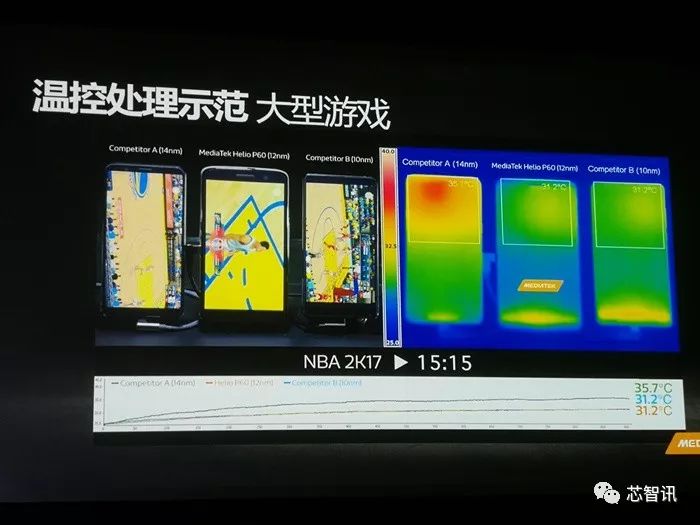
After playing the same 4K video for 15 minutes, the surface temperature of the mobile phone equipped with the 12nm Helio P60 chip is basically the same as that of the mobile phone equipped with the 10nm competing chip, which is only about 34 °C, compared with the mobile phone equipped with the 14nm competing chip. 8.1 ° C lower.
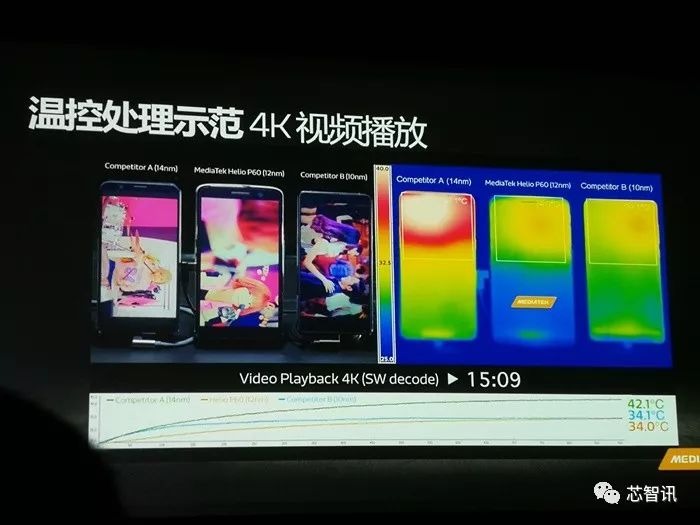
Obviously, thanks to the support of TSMC's 12nm process, the Helio P60's performance in power consumption and temperature control is really excellent.
The biggest highlight: multi-core AI processor + triple-core ISP
As MediaTek's first SoC with integrated AI core, the Helio P60's main multi-core AI processor is naturally a highlight, supporting many personalized AI applications such as face recognition, face detection, and speech recognition.
We all know that whether it is Kirin 970 or Apple's A11, there is only one NPU kernel inside to do AI acceleration. The Helio P60 is equipped with two APUs (AI Processors: Artificial Intelligence Processing Unit).
Although the APU of Helio P60 may have some gaps with the NPU of Kirin 970 and Apple A11 in terms of pure computing power, MediaTek's multi-core APU architecture also has certain advantages, especially when multi-threading performs parallel AI calculation.
For example, in the camera, thanks to the Helio P60's multi-core APU architecture, it can well support higher bit, high dynamic range RAW format shooting. The process is to combine three 10-bit RAW format photos to form a RAW original image with a higher dynamic range, and then output the best optimized high dynamic range photos through ISP, from taking photos to photos. Output, this is a thing that needs to be completed in a very short time. Obviously, this has great requirements for the amount of computation. If there is no hardware to accelerate, then it can only sacrifice image quality. The Helio P60's multi-core APU architecture enables multi-threaded parallel acceleration for real-time implementation in a very short time.
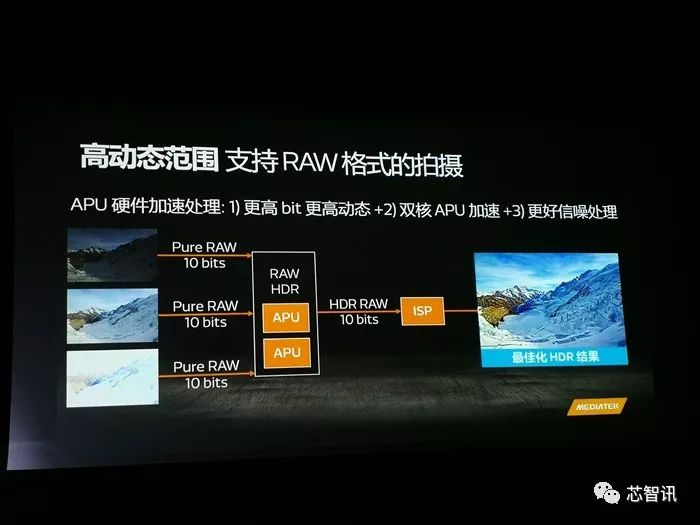
Especially for AI shooting, which is now dominated by many manufacturers, if you want to achieve the effect of RAW HDR, you usually need to pass the face recognition - screen segmentation - background blur - RAW HDR shooting - multi-frame synthesis and other steps To achieve, the amount of calculations in this is very large.
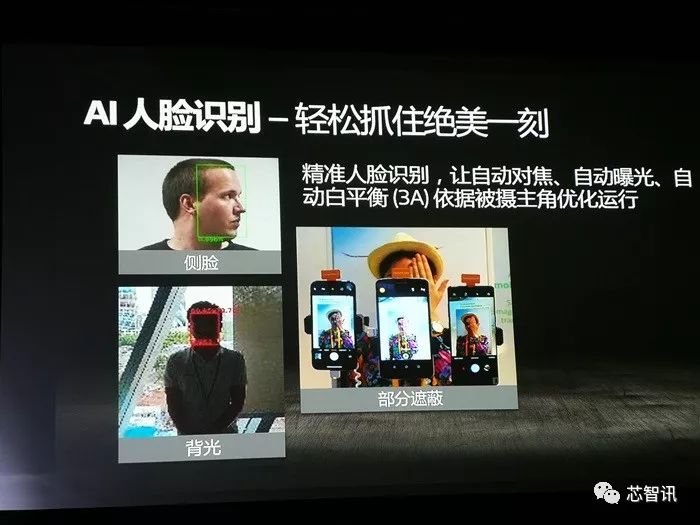
For example, in the case of AI face recognition, the first step is to accurately recognize the face, even if the side face, the backlight, and the face are partially blocked, then perform auto focus, auto exposure, and auto white. Balance, these are all optimized according to the protagonist being shot to get the best results. Obviously, this step requires a lot of AI operations, not to mention multiple steps.
If you only use a DSP or NPU with insufficient computing power, it will be slower and affect the user experience. The Helio P60's multi-core APU architecture can achieve parallel acceleration, one APU for face detection - picture segmentation - background blur acceleration, another APU for RAW HDR shooting - multi-frame synthesis acceleration, thus achieving the entire process Further acceleration to enhance the user experience.
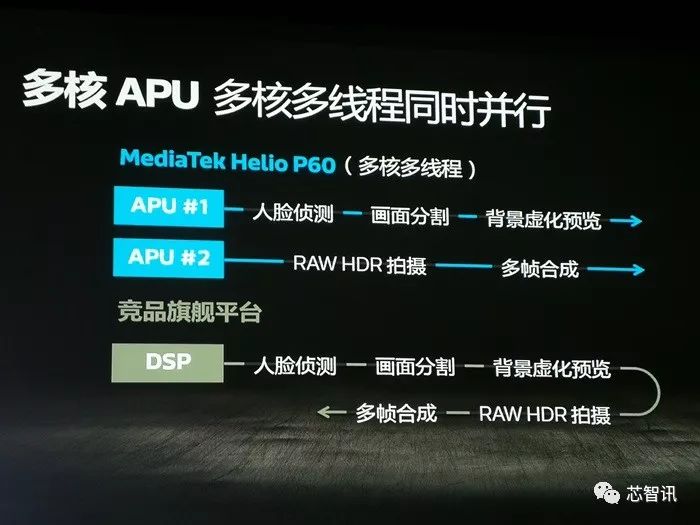
At the scene, MediaTek also demonstrated a DEMO to demonstrate the performance of the Helio P60's APU in real-time background blur.
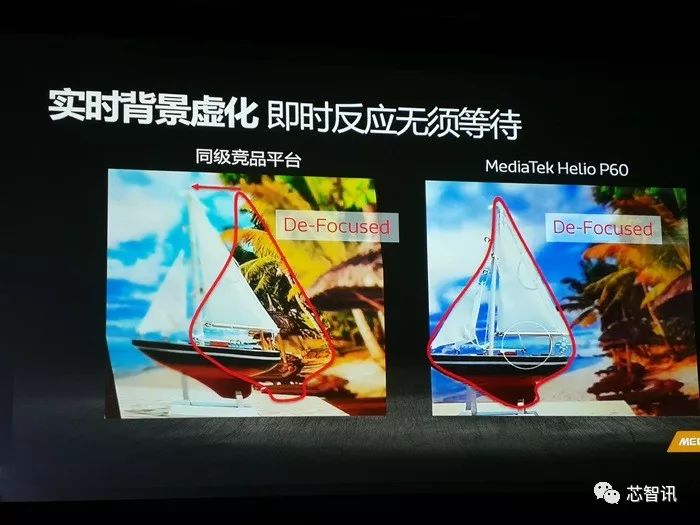
It can be seen that the Helio P60 can achieve real-time background blurring even when the object is moving fast, while the competing products are lagging behind.
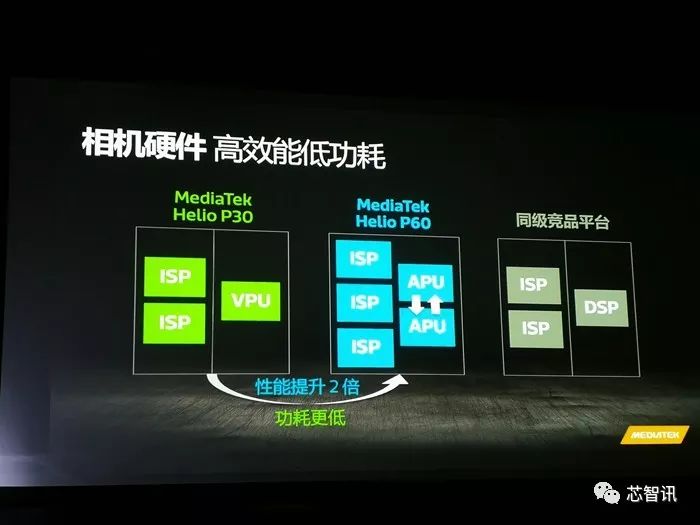
Another highlight of the Helio P60 is the ISP with a triple-core, which can support up to 32 million pixels, or 24 million pixels + 16 million pixels. Previously, the Helio P30 only had a dual-core ISP, which greatly improved the performance of the Helio P60. Together with the dual-core APU, the Helio P60 improved the camera hardware performance by 2 times and the power consumption was lower.
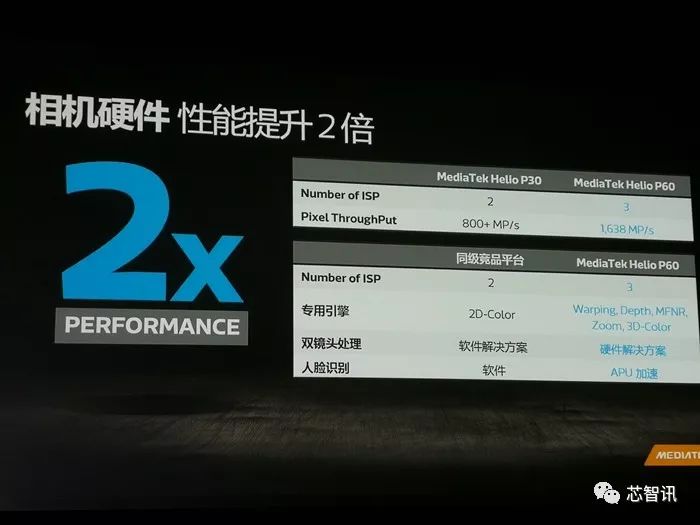
Although the MediaTek did not announce the performance parameters of its APU, it is not enough according to its published data that its APU is 35% faster than the CPU in Inception V3 and 46% faster in Mobilenet 1.0. In terms of power consumption efficiency ratio, its APU has reached 11 times that of the CPU.
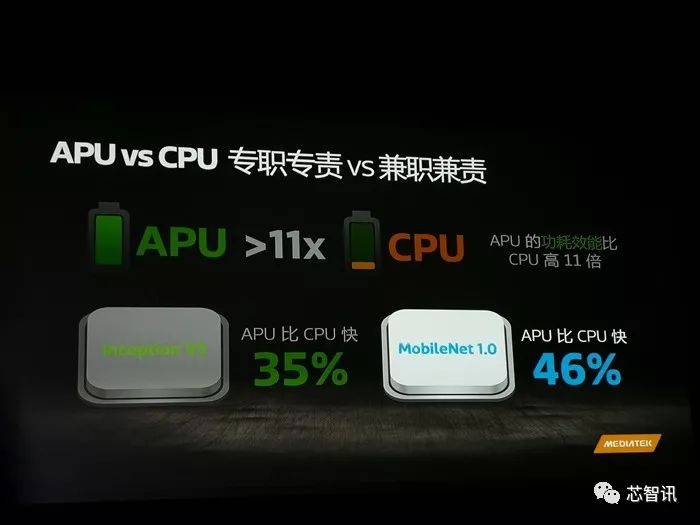
In addition, according to the video displayed by MediaTek in the live show, the Helio P60's APU calculation efficiency is about 85% faster than the GPU alone (the GPU is about 56% faster than the CPU).
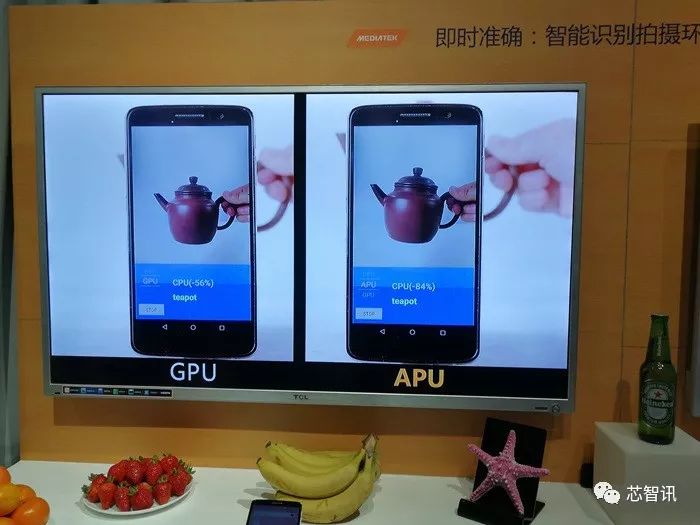
Create an open AI ecosystem: partners like it
It should be noted that the Helio P60 does not just do AI operations through its APU. Earlier we mentioned that the Helio P60 is based on MediaTek's NeuroPilot artificial intelligence platform. This platform forms a complete artificial intelligence solution by integrating CPU, GPU, APU and software (such as the NeuroPilot SDK) from MediaTek's SoC. In other words, the CPU, GPU, and APU of the Helio P60 will participate in the AI ​​operation.
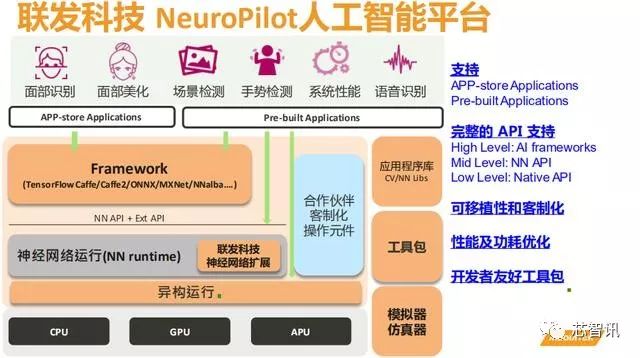
In other words, the NeuroPilot AI platform takes the form of heterogeneous computing, and allocates resources in the SoC according to different scenarios and actual needs to do AI operations, which is more flexible, more efficient, and applicable to various APPs. The application also has good compatibility and is easy to call.
In addition, the NeuroPilot platform has full API support and supports both high- and low-level APIs, which can meet the needs of customer portability and customization. For example, for some APPs that require High level API framework support, NeuroPilot supports many existing AI architectures on the market, including Google's TensorFlow, Caffe, Caffe2, Amazon's MXNet, and Sony's NNabla. This also allows developers to easily do AI application development/porting based on the open platform of NeuroPilot, helping developers to fully support MediaTek hardware to support.
At the press conference, MediaTek also invited Tencent (security team and Tian P P team), Shang Tang Technology, Defiance Technology, ArcSoft and other leading enterprises in the field of artificial intelligence to come to the platform. These vendors have worked intensively with MediaTek and have been deeply optimized based on the Helio P60.
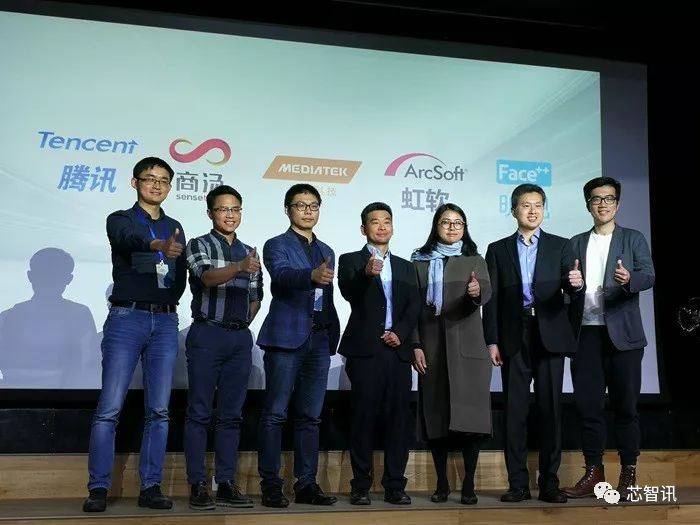
The TRP-AI anti-virus engine independently developed by Tencent Security Team introduces the dynamic detection based on APP behavior characteristics for the first time. Combined with AI deep learning, it has stronger general detection ability for new viruses and variant viruses, and can detect unknown viruses and mutations in time. The virus detects the virus malicious code cloud control loading in time, and more intelligently protects the user's mobile phone security. Wang Jiabin, director of Tencent Security Anti-fraud Lab, said: "The new generation of AI anti-virus engine can break the traditional anti-virus dilemma and bring better and timely protection to mobile phone users. MediaTek Helio P60 platform provides powerful AI hardware and technical support for us. The AI ​​algorithms and services provide a solid foundation."
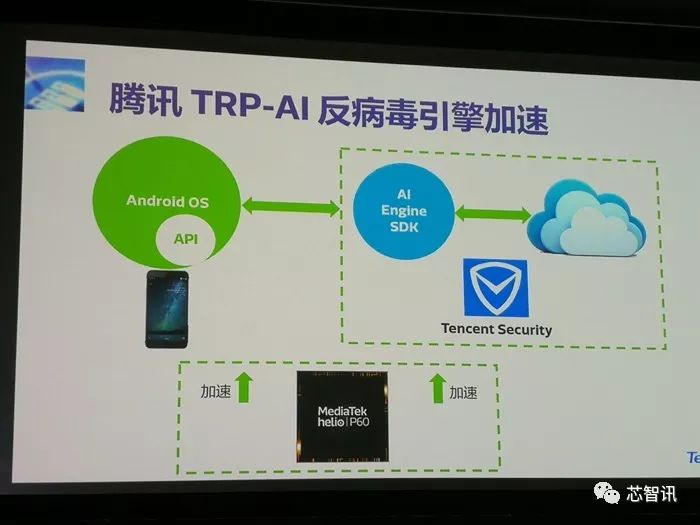
Fu Bin, the technical director of Tencent's P-picture, said that the daily P-picture based on MediaTek's NeuroPilot's neural network optimization achieved a 42% performance improvement over the CPU, and the overall energy consumption was reduced by 74%.
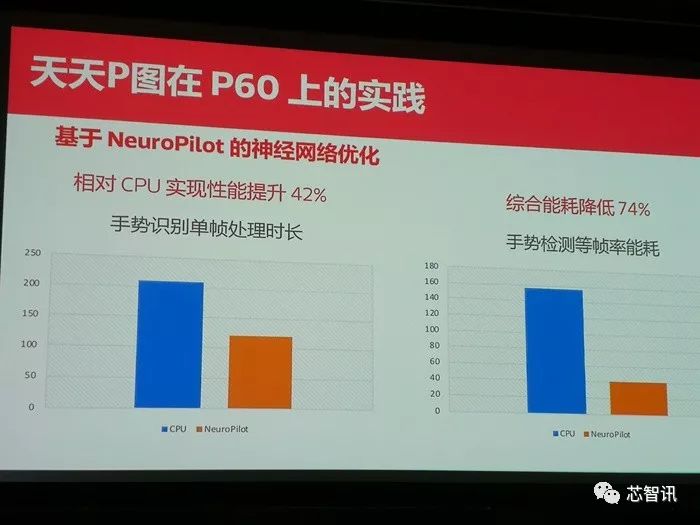
As the stealth champion currently occupying 90% of the smartphone beauty algorithm market, Rainbow said that the artificial intelligence platform based on Helio P60 has improved the performance of the Bokeh effect of the rainbow single shot by 30%, and the blur effect is further enhanced. Power consumption is also reduced by 20%. At the same time, ArcSoft also emphasized that MediaTek's NeuroPilot platform greatly simplified their AI application development.
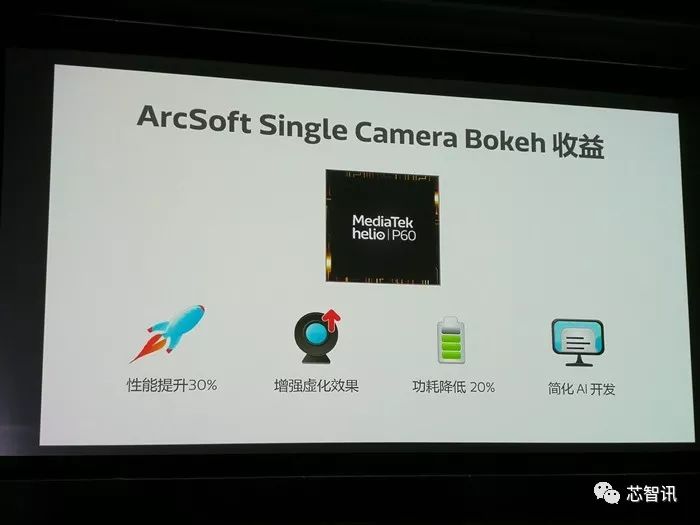
Xie Yinan, vice president of Vision Technology, said: In a short development time, Vision Technology has developed secure face recognition unlocking, advanced image processing, single lens background blur, smart gesture recognition, etc. on MediaTek Helio P60 platform. A practical and fun AI related application. Thanks to the support of the APU of the Helio P60, the 3D portrait light effect and 3D avatar products of the contempt have achieved a 20% speed increase, while the power consumption has dropped by 50%.
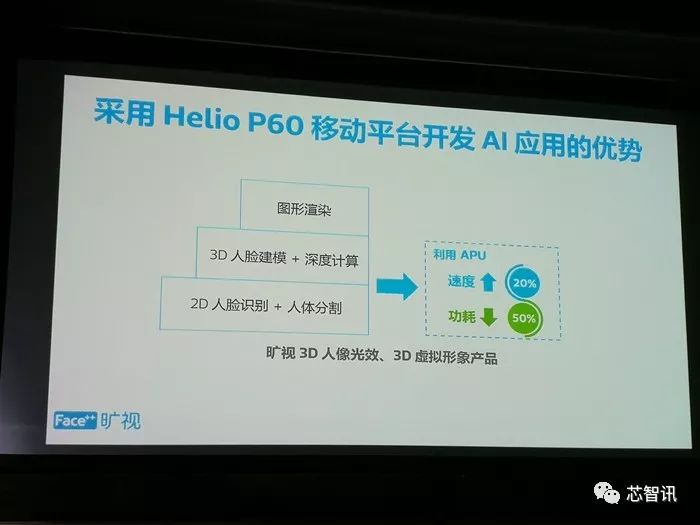
"The demand for imaging technology continues to increase, we need more excellent processors to provide powerful computing power. With the high-performance support of Helio P60, Shangyu's AI face unlocking solution," said Wang Zibin, product director of Shangtang Technology. The pipeline of the entire unlocking algorithm can be completed in about 100 milliseconds, and the user does not feel the whole process of unlocking. In addition, Shangtang's monocular blurring scheme not only supports real-time segmentation and blurring of portraits in dynamic scenes. Preview mode, and support fast, accurate blur picture mode, can achieve clear portrait, background blur effect."
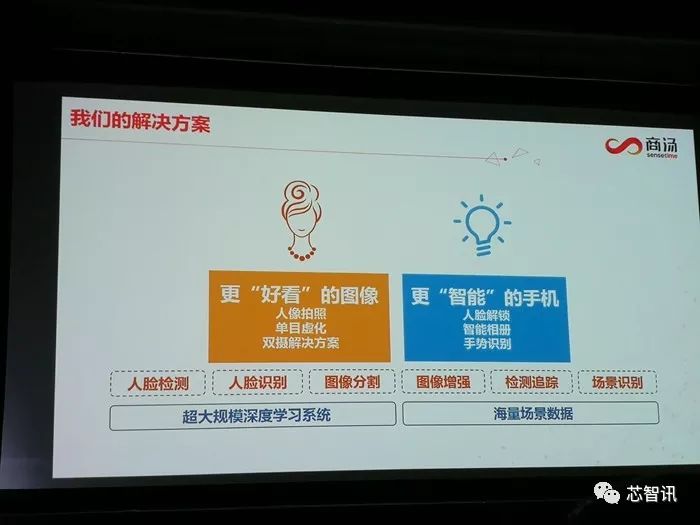
“Helio P60 combines solutions from many artificial intelligence vendors such as Tencent, Shangtang, ArcSoft, and Vision, and has achieved advanced levels in mobile security, photo taking, and face recognition.†MediaTek Wireless Communications Division Manager Li Zonglin said very proudly. At the same time, he also stressed at the meeting: "Our NeuroPilot platform can be said to be the most open Edge AI platform at present, we do not intend to be closed, because it can make more efficient use of hardware resources. MediaTek is committed to developing friendly, complete and The open AI ecosystem allows our partners and vendor-level consumers to experience artificial intelligence earlier, more conveniently, and more easily."
other
In terms of other parameters, Helio P60 also supports LPDDR3/LPDDR4, supports 1080P 30fps H.264/265 decoding, 1080P 30fps H.264 encoding, and supports 20:9 full screen.
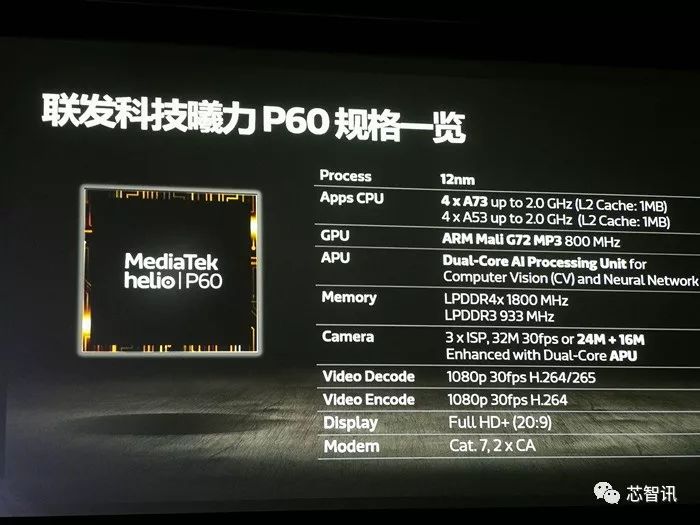
The fly in the ointment is that the Helio P60 still only supports Cat.7, 2×CA in baseband. Obviously, this is indeed much worse than the high-end chips of Qualcomm and Huawei.
Can you go back to the peak with MediaTek AI?
Due to the impact of the "Cat.7 Incident" and the strong impact of the Qualcomm Snapdragon 6xx series, since the second half of 2016, MediaTek's many partners have switched to Qualcomm, coupled with the 10nm Helio X30 is too radical, encountering market colds, making MediaTek was further under pressure, and its revenue, profit and market share all fell sharply. Until the second half of last year, after the launch of the Helio P30/P23 supporting Cat.7, it was re-used by several major customers, and MediaTek began to get rid of the "mire" and stop the decline.
However, the current situation of MediaTek is still not optimistic. According to previous Digitimes reports, in February 2018, MediaTek achieved revenue of NT$12.71 billion (about 2.7 billion yuan), down 24.5% from the previous month and down 25% year-on-year. According to the report, this is the lowest monthly revenue of MediaTek in the past three years. As a result, MediaTek achieved a total revenue of NT$29.54 billion in the first two months of 2018, a decrease of 16.2% year-on-year. However, it should be noted here that a factor that caused MediaTek's February revenue to fall sharply may have been affected by the Spring Festival.
Under this circumstance, MediaTek really needs a main product of the explosion to compete for the market and boost morale. Obviously, the success of the Helio P60 is crucial for MediaTek, and this time it will be all on the AI. The multi-core APU architecture has become the biggest selling point of the Helio P60.
We all know that in the development of mobile phone CPU, MediaTek played a very important role, it has sharply captured the user's demand for multi-core, especially in the development process of the quad-core to the eight-core, MediaTek is leading the way. In the market, the eight cores were quickly accepted by manufacturers and users. But unfortunately, when the mobile phone CPU developed to eight cores, users no longer have a cold for more core numbers, which also caused MediaTek's subsequent ten-core chips to be cold. This time, MediaTek pushed the concept of multi-core APU again, and I wonder if it will be accepted by the market again.
Regarding whether the multi-core APU will become a new trend in the market, Li Zonglin gave a very positive answer to Core Intelligence. "Multi-core APU architecture is very necessary. For example, in live broadcast, AI can do beauty while doing virtualization, which can greatly enhance the user experience." Li Zonglin added.
We all know that before MediaTek, Huawei and Apple both introduced processors with integrated AI cores. Although their AI cores are not multi-core architectures, their computing power should be stronger. However, at present, their AI processors are only used on their own high-end flagship machines, and their AI architecture is not as open as MediaTek, which makes it difficult for developers to launch their corresponding AIs for their platforms in a short period of time. Kernel-capable AI applications.
It should be noted that the APU installed in the Helio P60 is actually based on the upgrade of MediaTek's previous VPU module, making it more suitable for neural network computing. Similarly, Qualcomm's neural network engine mainly uses its DSP to do AI operations. At the same time, under Qualcomm's neural network engine deployment, its CPU/GPU will also participate in AI operations, and Qualcomm's neural network engine also supports it. Numerous open source neural network computing frameworks, which are very similar to MediaTek's NeuroPilot platform.
Although Qualcomm's AI engine previously existed only in the flagship Snapdragon 800 series, at the end of February this year, Qualcomm's new Snapdragon 700 series mobile platform launched at MWC joined the Snapdragon 800 series of artificial intelligence engines. According to official data, the AI ​​performance of the Snapdragon 700 series has doubled and the performance has increased by 30% compared to the Snapdragon 660. Obviously, this year's Snapdragon 700 series will become a strong competitor of the Helio P60.
However, for the future market performance of Helio P60, Li Zonglin is still very confident: "Helio P60 is MediaTek's most important mid-to-high-end platform this year, which will subvert the demand for performance, photography and AI for mid- to high-end smartphones. The price will bring more features to the high-end flagship mobile phone to more consumers, which will completely change the consumer's expectation for the smart phone. The customer's feedback on the Helio P60 is better than expected. There will be many models in March and April. The new Helio P60 mobile phone is on the market (rumored that OPPO R15 will be launched)."
Shenzhen Ruidian Technology CO., Ltd , https://www.szwisonen.com